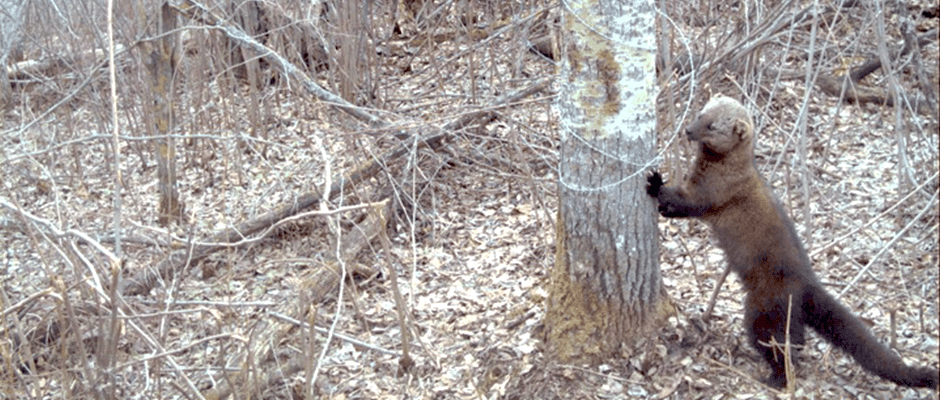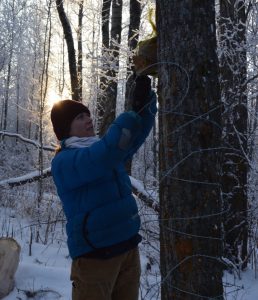Share this article
Student Research Project: Fishers recolonized remote landscape
After fishers (Pekania pennanti) were reintroduced in the 1990s to Cooking Lake Moraine, a rolling upland region in Central Alberta, researchers didn’t know if their budding population was a result of the reintroduction, or if perhaps fishers had also traveled from adjacent populations and colonized there.
Frances Stewart, a PhD candidate at the University of Victoria, recently earned first place for presenting her research on this topic at the recent annual TWS conference in Albuquerque, New Mexico.
The Cooking Lake Moraine historically had fishers, but the species hadn’t been there for 100 years, Stewart said. “Functionally isolated from the rest of the province’s boreal forest,” she said, the area is fragmented by agricultural land and other human land uses. The fishers that appear there today, biologists believed, were the result of animals reintroduced in the 1990s.
But were they? Stewart wondered. Or had fishers found their way to this isolated landscape?
Stewart looked at whether the DNA of the fishers there was similar to the rest of the province. She and her colleagues put up hair snags, got DNA samples of the fishers and compared the samples to ones donated from trappers, both from adjacent populations and from the reintroduction’s original source populations in Ontario and Manitoba.
“If they were related to the source population, that would signify the reintroduction was successful,” she said.
Her findings surprised her. Their genetics turned out to be closely related to the adjacent populations. The new Cooking Lake Moraine population appeared to be the result of recolonization, not reintroduction.
“They’re coming in from other parts of the province,” Stewart said. “This signifies the reintroduction might not have been successful, but also the landscape is connected to the rest of the province more than previously thought. They traveled across a lot of agriculture to get to this area, and we didn’t think they could do that.”
These findings are important, Stewart said, because managers or wildlife biologists might want to rethink whether money should be spent on reintroductions. She also suggests conducting genetic testing to see if they are successful — something not commonly done.
“Globally, the conservation community puts billions of dollars a year into reintroductions,” she said. “That money may be better spent on facilitating landscape connectivity to enhance natural recolonization.”
Stewart said was “surprised and honored” by the award.
“I just hope that people enjoyed the research,” she said, “and it’s useful to lots of managers and brought applicability to improve future conservation.”
Header Image: Camera traps photographed fishers at hair snags across the Cooking Lake Moraine. ©InnoTech Alberta and Alberta Parks









